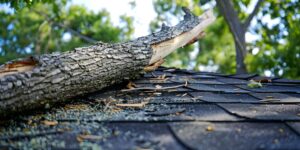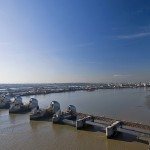Pension funds are turning to specialist bonds that bet on the likelihood of a natural disaster, in a search for yield and returns that are not correlated to the rest of the market.
What was once considered an exotic investment for specialists, catastrophe bonds, or “cat bonds,” have gone mainstream.
Pension funds accounted for 14 percent of direct investment in new cat bonds issued last year, from zero in 2007, according to data from reinsurer Swiss Re.
Asset managers including Baillie Gifford and F&C Asset Management now represent 17 percent of overall investment, compared to 12 percent in 2007.
“What has changed in the last few years is that the broader investment community has become much more aware of the asset class,” said Adam Alvarez, senior vice-president at Bermuda-based insurer and reinsurer Hiscox.
Catastrophe bonds are a form of Insurance-Linked Securities, financial instruments sold by insurers and reinsurers to share the risk they take on for natural catastrophes.
The bonds were developed after Hurricane Andrew hit the United States in 1992 causing more than $26 billion in damage, the costliest storm in U.S. history at the time.
The buyers receive an income but forfeit their original investment if a natural disaster occurs, helping insurance companies raise funds for payouts for the world’s most expensive risks – primarily storms and earthquakes in rich countries like the United States and Japan.
The sector is still small – just $16 billion in size – but ended 2012 on a high – with more than $6 billion in sales, the second highest total in the market’s history.
Its growth has been fueled in recent years by investors drawn to market-beating yields of around 8.5 percent, compared to global government notes or corporate bonds yielding an average of 4.8 percent and 6.2 percent respectively.
“We looked at several other options to invest in, but cat bonds were attractive to us because of the yields and its non correlation to other asset classes,” Reto Jung, head of research at Swiss-based independent wealth manager WMPartners.
With 2.5 billion Swiss Francs ($2.7 billion) in assets, WMPartners invests up to 4 percent of its portfolio in the asset class via ILS fund Twelve Capital, and is not considering increasing that allocation.
“We wouldn’t invest in cat bonds if they weren’t liquid,” he said.
MORE RISK THAN RETURN
The ILS market is skewed towards U.S. natural catastrophe risk – particularly in the highly populated and heavily insured areas of Florida and California.
The last really big event predates many current investors’ participation in the market, and some are concerned that the market has not been truly tested.
It is rare for investors in a catastrophe bond to lose all their money. Only eight of around 210 deals issued since 1997 have been triggered – four triggered as a result of losses from a natural disaster and others by damage to collateral as a result of the 2008 financial crisis.
Cat bonds cover events that are so big they are thought to happen only once in every 100 or 200 years, and must hit specific regions of the world and cause millions in damage before a bond is dented. Nevertheless, sooner or later, they are bound to inflict losses.
“At some point that good run will be interrupted and it will be interesting to see how these new investors react to the kinds of significant events that these bonds were designed to protect,” Hiscox’s Alvarez said.
If a 200 year hurricane hit Florida it could cause $5 billion in cat bond losses, according to catastrophe risk modelling firm Risk Management Solutions (RMS).
“The worst scenarios are those that make multiple landfalls, striking Florida as a major hurricane, and then moving northwards to cause loss throughout the north-eastern states,” said Ben Brookes, senior director, RMS Capital Markets.
“In these most extreme scenarios, whilst highly unlikely, it’s possible that over 60 bonds could trigger, causing more than $7 billion in cat bond losses,” he said.
A repeat of Katrina – the 2005 hurricane that now holds the record as the costliest in U.S. history with more than $100 billion in economic damage – would trigger eight bonds, with a $500 million expected loss, according to RMS.
If Hurricane Andrew were to be repeated today in heavily-insured Florida, nine bonds would be likely to trigger with an expected cat bond loss of $1 billion.
ILS funds say the market has rebounded following catastrophic events like the Japanese earthquake in 2011, which wiped out a cat bond sold by Munich Re, called Muteki Ltd.
There have been other serious tests, such as the 2008 Lehman Brothers bankruptcy that exposed weaknesses in cat bond’s collateral structures.
“Investors are not surprised when they lose money,” said Daniel Grieger, a partner at ILS fund manager Twelve Capital. “One of our funds grew by 40 percent after the Tohoku quake in March 2011 as investors wanted to take advantage of rising prices.”





















 One Meter Sea Level Rise by 2100 Could Affect Over 14M People, $1T Worth of Property
One Meter Sea Level Rise by 2100 Could Affect Over 14M People, $1T Worth of Property  Gunmaker Sig Sauer Must Pay $11M Over Pistol That Fired Accidentally
Gunmaker Sig Sauer Must Pay $11M Over Pistol That Fired Accidentally  Unite and Conquer: How the Insurance Industry Can Deflate Social Inflation
Unite and Conquer: How the Insurance Industry Can Deflate Social Inflation  Generative AI: A Double Agent Serving Good and Evil in the World of Claims
Generative AI: A Double Agent Serving Good and Evil in the World of Claims 